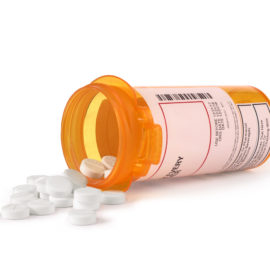Mac Miller, the beloved and highly acclaimed rapper, passed away at the age of 26 due to a tragic battle with drug addiction. His accidental overdose, like those of many other talented individuals, could potentially have been averted with a committed and proactive approach to addiction recovery. The silent struggles faced by numerous musicians, artists, and celebrities highlight the pervasive fear of public judgment that often accompanies the disclosure of their addiction battles.
Addiction as a Chronic and Relapsing Disorder
One fundamental aspect of understanding addiction is recognizing it as a chronic and relapsing disorder. Unlike acute illnesses that have a defined course and resolution, addiction is characterized by a persistent and often recurring pattern of substance use or compulsive behavior despite adverse outcomes.
The chronic nature of addiction means that it’s a long-term condition that usually requires ongoing management and support. Individuals grappling with addiction often face challenges in maintaining abstinence and may experience periods of relapse, where they revert to their addictive behaviors even after periods of recovery. This relapsing nature highlights the need for comprehensive and sustainable approaches to treatment and recovery.
Acknowledging addiction as a chronic and relapsing disease can help in shaping effective interventions and support systems. Recovery is a continuous process, involving not only the initial stages of detoxification but also long-term strategies to prevent relapse and promote sustained well-being. By adopting a holistic understanding of addiction, society can better address the multifaceted factors contributing to this condition and work towards promoting a more supportive environment for individuals on their journey to recovery.
Embed from Getty ImagesWhy Did Mac Miller Do Drugs?
Mac Miller candidly addressed the personal struggles he faced, both in his lyrics and during interviews, particularly acknowledging his history of battling demons related to drug abuse.
In 2011, Mac Miller’s musical journey took flight with the release of his debut album, Blue Slide Park, propelling him to the top of the charts. The 19-year-old artist from Pittsburgh relocated to Los Angeles with the aim of advancing his music career. Despite achieving notable success with 53 booked shows in a six-month span, Miller, like any emerging artist, came under the harsh scrutiny of critics. The challenges escalated during his Macadelic album and tour in 2012, where unfavorable reviews and an arduous tour schedule contributed to his initial foray into the world of substance abuse.
To cope with the stress of touring, Miller first started using marijuana regularly. As demands on him increased, though, he ventured into other substances to manage his mental well-being. Specifically, he began using lean, a concoction containing promethazine (an addictive sedative) and codeine (a Schedule II narcotic). In a revealing 2013 Complex interview, Miller admitted that he developed a diagnosable addiction along the way.
In February 2016, Mac Miller released a deeply personal 12-minute YouTube documentary called Stopped Making Excuses. In this revealing piece, the artist openly discussed his ongoing battle with substance abuse. Miller acknowledged that his initial entry into harder drugs stemmed from his use of marijuana: “I needed to get a drug that was a little more numbing. I think that’s what really sparked me doing other drugs because I hate being sober. I wanted a drug to do.“
Miller’s history with drugs predated his music career, then. He began using drugs at the age of 15 – a critical period characterized by significant and dynamic changes in the developing brain. Drug use at this stage of development increases the subsequent likelihood of addiction.
What Did Mac Miller Overdose On?
Miller was discovered in an unresponsive state at his Studio City residence in Pittsburgh by his personal assistant on September 7, 2018. Upon finding him, the assistant promptly called 911 and administered CPR until emergency responders arrived. Unfortunately, despite the efforts, he was declared deceased at the scene.
In memory of Miller, thousands of devoted fans gathered for a vigil on September 11, 2018, at Blue Slide Park in Pittsburgh. This location was the inspiration for the title of his debut album. To this day, the site remains a space for reflection and remembrance.
The post-mortem results of November 18 revealed that Miller died from an overdose that involved cocaine, fentanyl, and alcohol.
In September 2019, three people were arrested during an investigation into the death of Mac Miller. Just two days before his untimely death, Miller had purchased some counterfeit opioids that contained fentanyl rather than oxycodone. Miller had requested Percocet – a prescription painkiller that contains oxycodone – alongside Xanax and cocaine. It is believed that Miller snorted the laced pills, leading to his death.
Fentanyl and the Fourth Wave of the Opioid Crisis
In the past year, the United States witnessed a staggering surge in drug overdoses, marking an increase of more than 15%. The figures escalated from 94,000 in 2020 to almost 107,000 in 2021, according to CDC (Centers for Disease Control and Prevention). Among this total, a significant majority—over 80,000 cases—were linked to opioids, with over 70,000 involving the potent synthetic opioid, fentanyl.
CDC highlights that fentanyl is often co-administered with other substances, such as cocaine or alcohol, elevating the likelihood of overdose. This was evident in the case of Mac Miller and this form of polysubstance abuse has been flagged as the fourth wave of the U.S. opioid epidemic.
What Can We Learn from Mac Miller’s Story?
There are many lessons to learn from Mac Miller’s tragic story:
- Addiction is a chronic brain disorder, not a choice: Addiction is a chronic and relapsing brain disorder rather than a lack of willpower or a choice. Understanding this allows for a more empathetic discourse surrounding addiction.
- Avoiding the blame game: In the aftermath of Mac Miller’s death, there was unwarranted blame directed toward his ex-girlfriend, Ariana Grande. Addiction is a personal struggle, and placing blame on loved ones is self-defeating. Grande’s statement about the challenges she faced while supporting Miller shows the need for compassion over condemnation.
- Breaking the silence on recovery: Mac Miller’s openness about his battles with addiction served as a powerful reminder that recovery shouldn’t be a silent struggle. Many people, especially those working in the entertainment industry, face the temptation to conceal their struggles. By encouraging open discussions and seeking help without shame, we can contribute to a society where addiction is viewed as a manageable condition with the right treatment.
- Dispelling the stigma surrounding addiction: Various celebrities, including Mac Miller, have shared their addiction and recovery stories, contributing to the de-stigmatization of the issue. Miller’s story reminds us that even those who seem to have it all may grapple with addiction. Acknowledging the universality of this disease and urging individuals not to hide their struggles can lead to a more supportive environment for those seeking help.

Get Treatment for Drug Addiction at Gratitude Lodge
Addiction doesn’t discriminate and impacts people of all ages and backgrounds. If you have been battling substance abuse and you require professional help achieving and maintaining sobriety, reach out to Gratitude Lodge.
We have pet-friendly and inclusive treatment centers in Long Beach and Newport Beach, CA, that are dedicated to your whole-body addiction recovery. Start by addressing drug or alcohol dependence in our medical detox program. Medications can reduce the severity of withdrawal symptoms and cravings. Continuous clinical monitoring ensures that neither relapse or complications derail your early recovery.
During ongoing inpatient treatment, engage with an individualized combination of therapies that may include:
- Medication-assisted treatment
- Psychotherapy (CBT and DBT)
- Holistic therapy
- Family therapy
- Group therapy
- Individual counseling
- Aftercare
When you are tired of living constrained addiction, reach out to Gratitude Lodge by calling 800-994-2184.




























